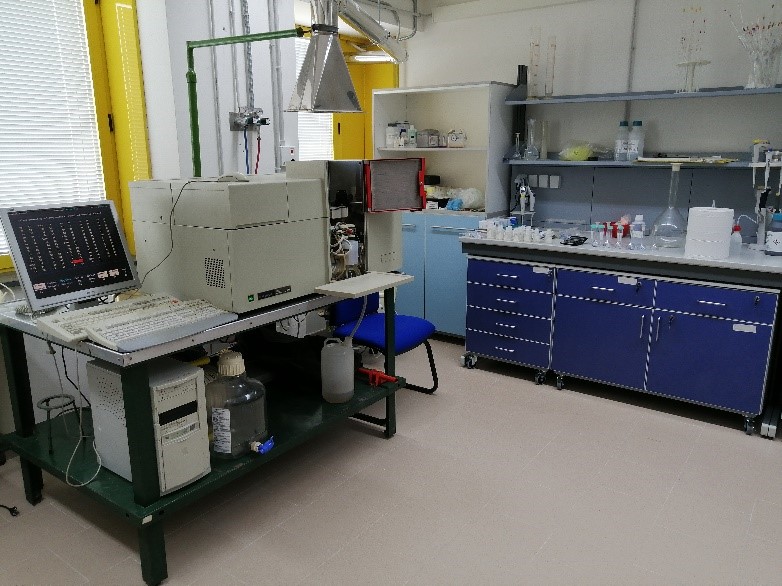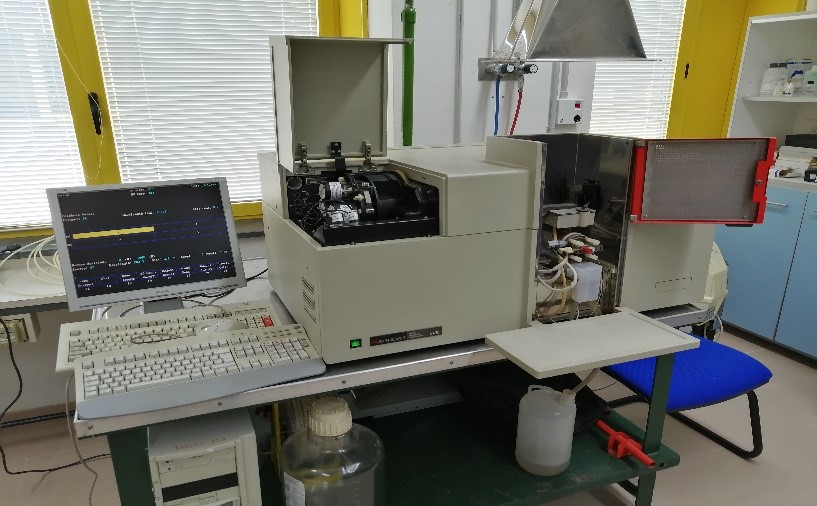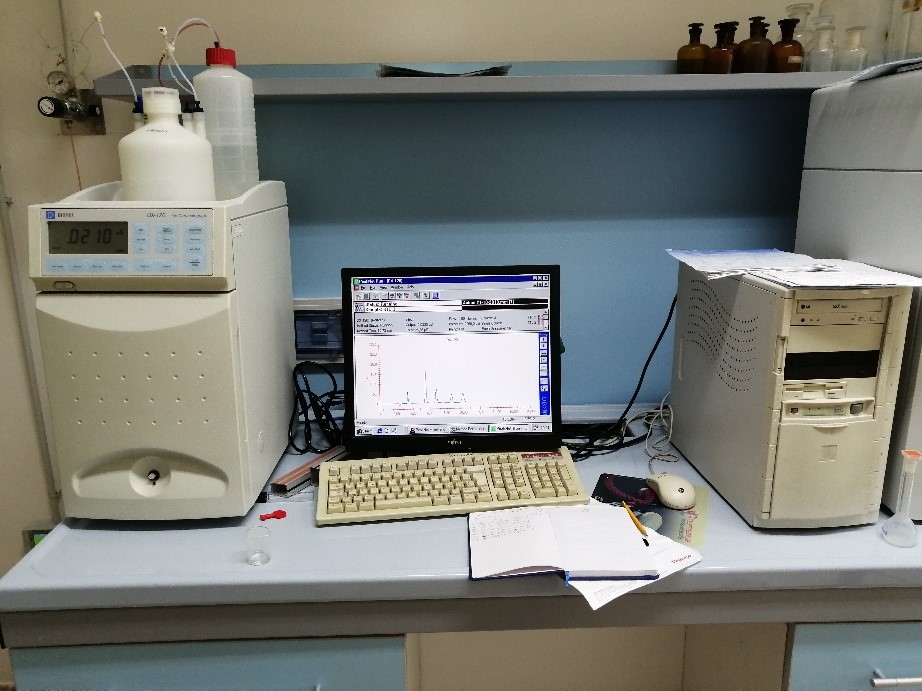Performed activities:
Qualitative and quantitative geochemical analysis of geological samples (rocks, minerals and natural, thermal, underground and marine waters). Analyses are carried out within the framework of Department research projects, services for third parties and research agreements.
Available Equipments:
Perkin-Elmer 2100 atomic absorption spectrophotometer
Dionex DX 100 Ion Chromatograph
Dionex DX 120 Ion Chromatograph
Secomam S.500 photocolorimeter
Brand digital burettes
Conductivity meters
pH meters
digital thermometer
Atomic Absorption Perkin-Elmer 2100
The Atomic Absorbtion Spectroscopy (AAS) is based on the absorption of light by atoms. Atoms absorb light at certain wavelengths, depending on the nature of the elements. Light at these wavelengths has enough energy to change the electronic level from the ground state to the excited stateThis absorption is proportional to the concentration of the element in the sample to be analysed. Normally the atomization takes place via a flame which heats the sample up to a temperature of around 2000 °K
Dionex 120 and Dionex 100 ion chromatograph
The method is based on the chromatographic separation of cations and anions using cation or anion exchange columns. The individual analytes are eluted in successive times and determined by a conductometric detector after chemical or electrochemical suppression of the electrical conductivities of the eluent. From the integration of the areas of the single chromatographic peaks the concentrations are obtained by comparison with calibration curves obtained by injecting solutions at known concentrations falling within the analytical investigation field.


Cromatografo Ionico Dionex 120 e Dionex 100
Il metodo si basa sulla separazione cromatografica dei cationi ed Anioni mediante colonne a scambio cationico o anionico. I singoli analiti vengono eluiti in tempi successivi e determinati da un rivelatore conduttometrico previa soppressione chimica o elettrochimica delle conducibilità elettrica dell'eluente. Dall'integrazione delle aree dei singoli picchi cromatografici si ricavano le concentrazioni mediante confronto con curve di calibrazione ottenute iniettando, soluzioni a concentrazioni note comprese nel campo di indagine analitica.




